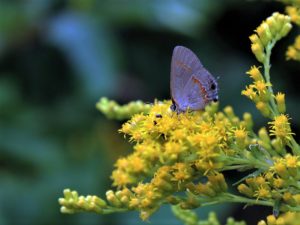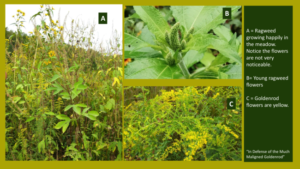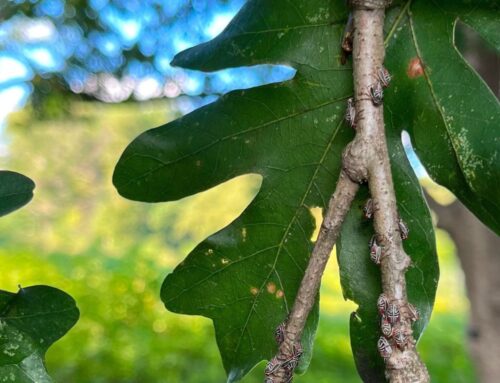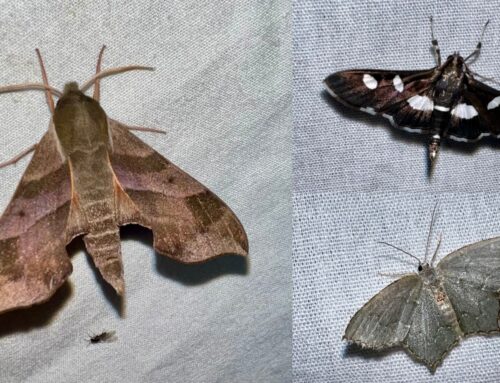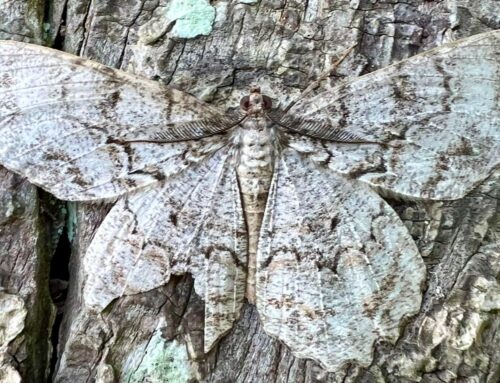Seasonal allergies are disruptive to your sweet slumber and can definitely wreak havoc on your outdoor activities. My friends, this is the second worst time of year for me as a nature lover. Not only are the grasses in full pollination mode, so are many of our flowering plants. But before you start ripping things out of your garden, let’s make sure we identify the right culprit.
Goldenrod is not your enemy. In fact, goldenrod (or Solidago) is a powerhouse food source for pollinators. Goldenrod is an insect-pollinated plant that produces very large and sticky pollen grains. Those large sticky grains ensure that when pollinators visit for nectar, pollen will stick to them and be carried to other goldenrods, allowing for cross-pollination. Large and sticky pollen grains are not easily carried by the breeze. In fact, only 1% to 2% of pollen found in the air is from goldenrod. Goldenrod pollen is too heavy to be hanging out ready to float on to an innocent passerby.
The real culprit is the wind pollinated ragweed (Ambrosia artemisiifolia). 17 species are native to North America and some can produce over 1 billion pollen grains per plant per season. There are two species prevalent in our area, common ragweed (Ambrosia artemisiifolia) and great ragweed (Ambrosia trifida). Luckily these two only produce just over a million pollen grains per plant per season. Ragweed flowers from mid-August to mid-September which coincides with goldenrod’s bloom time. It stands 3 – 6ft tall which is tall enough to clear most other plants so it can catch the wind. Ragweed is common in roadsides, disturbed areas and yes, even in gardens. Its pollen can stay airborne for several days spreading misery to sufferers.
But wait, does ragweed have any redeeming qualities? Here’s something – common ragweed is one of the most efficient plants at removing lead from the soil. Ragweed seeds also provide a high protein and fat food source for birds during winter months. Finally, it is host to the bordered patch butterfly (mostly in southwest states). So I guess it isn’t all bad. After all it is a native plant – too bad that it is the cause of most allergic reactions second to mold!
The upshot is that by mid-September when the temperature dips below 60 degrees Fahrenheit, ragweed will stop producing pollen. We can all literally breathe a sigh of relief. And until then, enjoy the goldenrod! There are 23 species native to Pennsylvania. Maybe consider adding one to your home garden. The bees and butterflies will thank you.


